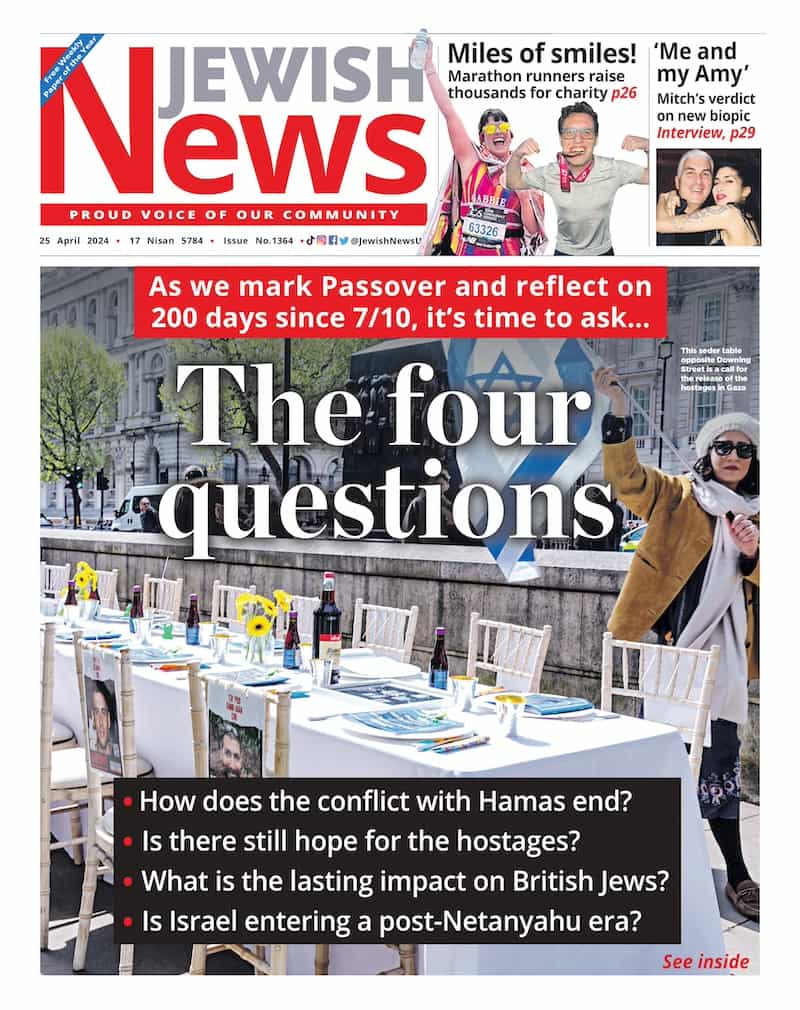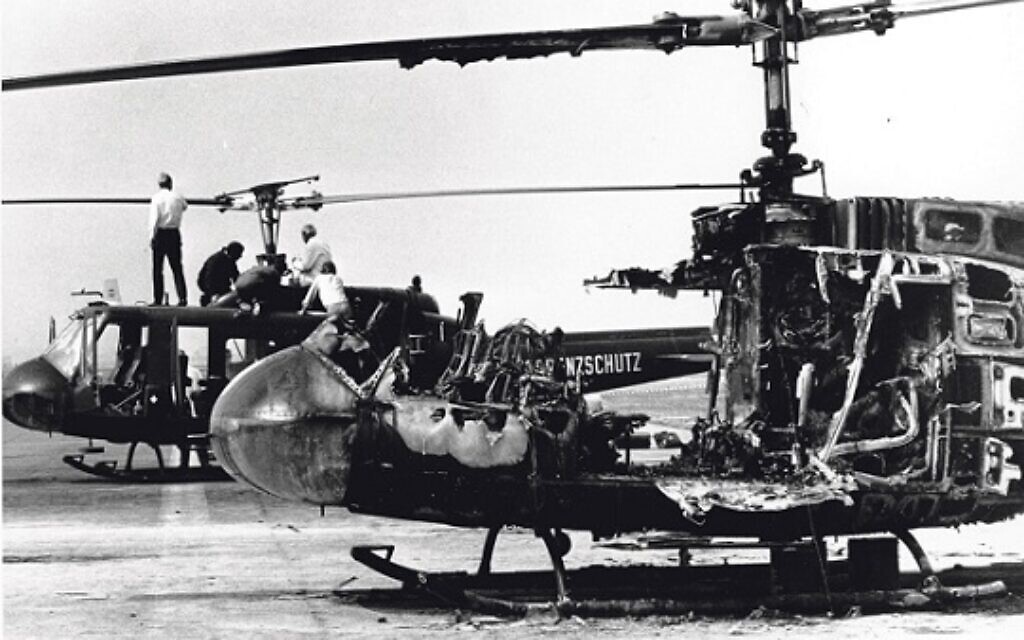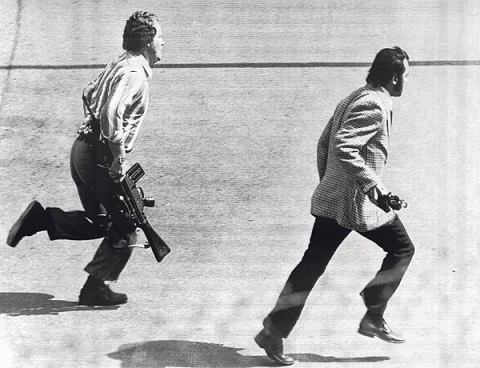Photographs That Changed The World: Munich’s face of terror
Francine Wolfisz reviews a new history series looking at photographs that changed the world – including the stark image of a terrorist captured at the 1972 Olympic Games
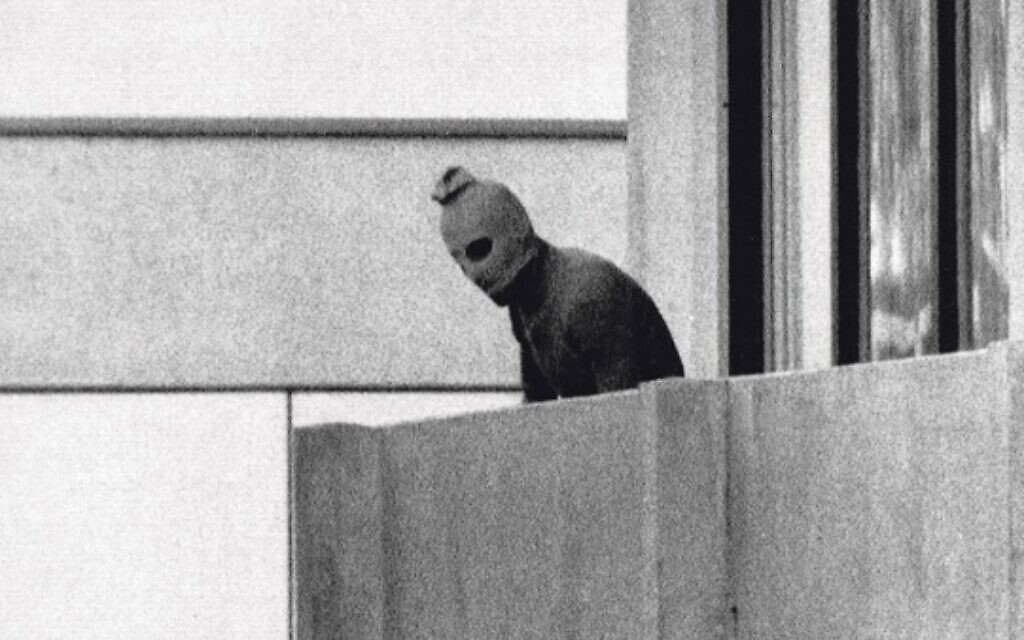
Peering over the edge of a balcony, the balaclava-clad terrorist silently stares out at the police and paparazzi gathering below, the world apprehensively awaiting his next move.
More than 45 years on, Kurt Strumpf’s haunting photograph from the 1972 Olympic Games still terrifies as much as it shocks – for it was taken during the horrific events of 5 September, when 11 Israeli athletes were targeted by a Palestinian terror group, in return for the release of 234 Arab prisoners and two German founders of a far-left faction.
One commentator likens the terrorist’s head to “a skull-like image”, while another describes it as akin to “a horror film, with the dark threat of the unreasoning murderer, a person who has no compunction, no compassion”.
Get The Jewish News Daily Edition by email and never miss our top stories Free Sign Up
Now a new series explores the events behind this and other images that captured history in the making.
Photos That Changed The World, which airs on Mondays on the History channel, also features Nick Ut’s image of a Vietnamese girl running away after a napalm attack, Jeff Widener’s picture of a student standing in front of tanks in Beijing’s Tiananmen Square, and Ron Edmonds’ photos of an assassination attempt on US President Ronald Reagan.
Other episodes include Neil Armstrong’s photograph of his fellow astronaut, Buzz Aldrin, on the surface of the moon, Charles and Diana’s royal wedding balcony kiss and Nelson Mandela’s long walk to freedom.
In Munich Massacre, which airs on 4 November, the chilling image of a faceless terrorist takes centre stage alongside other striking pictures taken during the Olympics’ darkest moment.
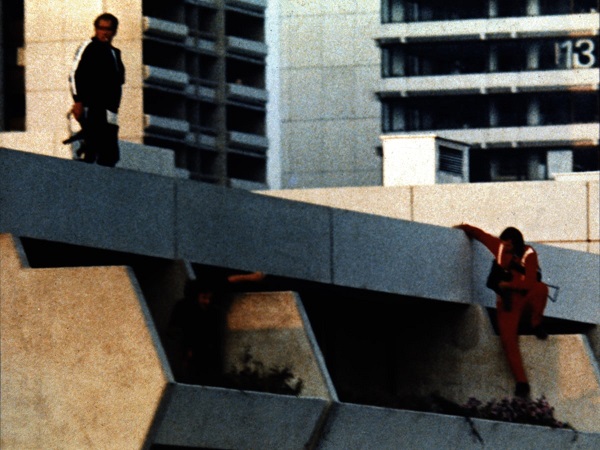
Commentator and broadcaster Barry Davies, who was reporting on the Olympics at the time, recalls the initial excitement of a team from Israel taking part.
“The President of West Germany, Gustav Heinemann, said the whole idea was to overcome hatred and pave the way for reconciliation. The fact that here was a team of sports men and women from Israel competing on German soil was a huge thing.”
Professor and author Kay Schiller adds that “1972 was meant to reverse impressions that 1936 had left behind”.
As a way of achieving this, Germany designed an “informal, free” Olympic Games, in which security officers were dressed not in police clothing, but light blue uniforms and, importantly, were unarmed. It was a decision that would have fatal consequences.
Shortly after 4am on 5 September, 1972, eight members of Black September scaled a 6ft fence and stormed the flat where the Israeli athletes were staying.
Carrying duffel bags with assault rifles, pistols and grenades, they quickly overpowered the defenceless athletes and killed weightlifter Yossef Romano and wrestling coach Moshe Weinberg.
The gunmen then began negotiating for the release of the remaining nine athletes, but Israel’s Prime Minister, Golda Meir, was resolute that no negotiation should take place. “If we [Israel] should give in, then no Israeli anywhere in the world shall feel his life is safe… it’s blackmail of the worst kind,” she said.
As the hours dragged on, the world’s press descended on the Olympic village – and were there to capture the moment 38 German police officers arrived on the scene as part of a rescue operation.
Schiller comments: “There was no news blackout. Everyone could watch on the television, including the terrorists, that German policemen dressed in tracksuits were trying to storm the building.”
The terrorists realised the world’s media could spread their message about the plight of the Palestinian people and the conflict with Israel – prompting one balaclava-clad gunman to step onto the balcony. It was “a propaganda success” for Black September, adds Schiller.
The German authorities feigned an agreement with the terrorists, allowing them to transport the hostages by helicopter to an airfield, before boarding a plane to Cairo. But, tragically, the West German police plan to ambush the terrorists with snipers at the airfield suffered from improper planning and miscommunication. The hostages were all killed, alongside a police officer and five of the eight terrorists.
For former Daily Mirror editor, Mike Molloy, the stark black-and-white photograph of the “unreasoning” terrorist is one that captures the entire tragedy without saying a single word.
“It’s the horror of the faceless person, the murderer who is going to come and kill you for political reasons.It was a picture that shocked the world.”
Photos That Changed The World: Munich Massacre airs on 4 November, 10.30pm, on History

Thank you for helping to make Jewish News the leading source of news and opinion for the UK Jewish community. Today we're asking for your invaluable help to continue putting our community first in everything we do.
For as little as £5 a month you can help sustain the vital work we do in celebrating and standing up for Jewish life in Britain.
Jewish News holds our community together and keeps us connected. Like a synagogue, it’s where people turn to feel part of something bigger. It also proudly shows the rest of Britain the vibrancy and rich culture of modern Jewish life.
You can make a quick and easy one-off or monthly contribution of £5, £10, £20 or any other sum you’re comfortable with.
100% of your donation will help us continue celebrating our community, in all its dynamic diversity...
Engaging
Being a community platform means so much more than producing a newspaper and website. One of our proudest roles is media partnering with our invaluable charities to amplify the outstanding work they do to help us all.
Celebrating
There’s no shortage of oys in the world but Jewish News takes every opportunity to celebrate the joys too, through projects like Night of Heroes, 40 Under 40 and other compelling countdowns that make the community kvell with pride.
Pioneering
In the first collaboration between media outlets from different faiths, Jewish News worked with British Muslim TV and Church Times to produce a list of young activists leading the way on interfaith understanding.
Campaigning
Royal Mail issued a stamp honouring Holocaust hero Sir Nicholas Winton after a Jewish News campaign attracted more than 100,000 backers. Jewish Newsalso produces special editions of the paper highlighting pressing issues including mental health and Holocaust remembrance.
Easy access
In an age when news is readily accessible, Jewish News provides high-quality content free online and offline, removing any financial barriers to connecting people.
Voice of our community to wider society
The Jewish News team regularly appears on TV, radio and on the pages of the national press to comment on stories about the Jewish community. Easy access to the paper on the streets of London also means Jewish News provides an invaluable window into the community for the country at large.
We hope you agree all this is worth preserving.
-
By Brigit Grant
-
By Laurent Vaughan - Senior Associate (Bishop & Sewell Solicitors)
-
By Laurent Vaughan - Senior Associate (Bishop & Sewell Solicitors)
-
By Laurent Vaughan - Senior Associate (Bishop & Sewell Solicitors)
-
By Laurent Vaughan - Senior Associate (Bishop & Sewell Solicitors)

